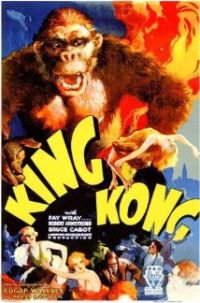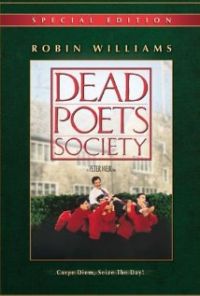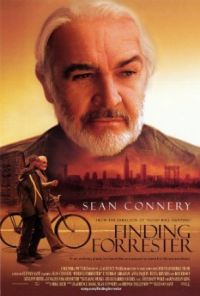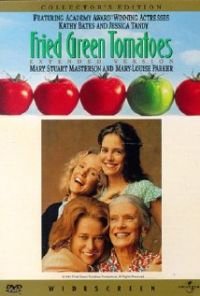A guest post by Sam Knight.
 When I was young, around seven or eight years old, I was treated to the adventure of a lifetime on an eight-inch black-and-white television screen. My first movie action hero wasn’t Indiana Jones, Luke Skywalker, or even Captain Kirk. (Although I’m being nitpicky about Kirk. He was still a television character back then…) It was Jack Driscoll.
When I was young, around seven or eight years old, I was treated to the adventure of a lifetime on an eight-inch black-and-white television screen. My first movie action hero wasn’t Indiana Jones, Luke Skywalker, or even Captain Kirk. (Although I’m being nitpicky about Kirk. He was still a television character back then…) It was Jack Driscoll.
Little did I know that years after teaching me what I thought a hero should be, Jack would teach me something about storytelling, too.
Did the name Jack Driscoll ring a bell? Probably not. Not for most people, anyway. I watched his movie every chance I got (which, back before VCRs, wasn’t very often). To this day, even though I own the film, if I see it’s on TCM, I’ll stop and watch it.
Jack was the everyman character. Not the everyman that everyman is, but the everyman that everyman saw himself as and wanted to be. Jack was rugged. He was quiet until he saw things that didn’t look right to him, and then he couldn’t be placated until things were put right. Jack wasn’t the one in charge, but he stood up and took charge when he needed to, and if he was afraid, he didn’t stop to waste the time to show it.
I saw Jack deal with connivers, hostiles, and cowards, all with aplomb. He even held his ground when faced with monsters and military. He was my hero.
When I was older, I saw Jack again. In a new movie. It was a remake. He had a new face, new job, and new name. “Jack Prescott,” they called him. They tried to make him more realistic. They tried to give him depth, make him interesting, make me relate to him and like him. They failed. Instead of watching Jack deal with connivers, hostiles, and cowards, I felt like he was one-and a wimp, too. He couldn’t deal with anyone. Situations flowed around him and happened to him. He was not in control of his own destiny. I hated the remake. I did my best to erase it from my mind.
Years later, I met Jack a third time, in yet another remake. He was again a different man, but at least he had his name back. He still didn’t have the position of authority that embodied his original character. They tried to make him an everyman again. They did better than the second try, but still not as good as the original. This time, as situations flowed around him, Jack fought back, a little, and grew as a character. But he was still second fiddle. He lost out to the grandeur of the film. He lost out to the special effects, the monster, and the hype. Don’t get me wrong, the movie was good, but I felt the story was lacking something.
If by now you still haven’t placed Jack Driscoll’s name, I will take mercy upon you and thank you for being patient. You see, Jack was one of the first modern action heroes. And, as they say, a hero is as only as great as the villain he fights-making Jack one of the greatest of all time. His nemesis was none other than King Kong!
Jack struggled against the machinations of Carl Denham while still following orders from his captain. He kept control of his crew in the face of hostile natives on Skull Island. He fell in love with Ann Darrow, in spite of his misgivings of having a woman on board-or women in general, for that matter. And when Kong took Ann, Jack went into the mouth of hell to get her back. King Kong was the story of a hero, Jack Driscoll.
Until they remade it. The 1976 remake was a kind of eco-warning. Jack Prescott was a placeholder character in a placeholder story that ran only on the fumes of the memory of what the original King Kong had been. This was not a story about my hero; it was mostly about some whiney guy telling people not to ruin the ecology. Kong was not his nemesis. The movie almost didn’t need King Kong at all, and a large portion of the film didn’t have Kong in it. It was almost like two separate stories, with Kong’s tacked on to draw an audience. (Jack doesn’t even get the girl in the end!)
In 2005, the film was remade again. It was a much better film, in my opinion, but as I said before, the story centered on the special effects, the monster, the island, and the Tragedy with a capital T. This version was all about King Kong and his tragic story. Kong was the hero who failed. The only thing we needed Ann for was to show us how tragic it was, and the only thing Ann needed Jack for was to move the story along so she didn’t stay with Kong. By the time the movie was over, we wanted Kong to get the girl.
Let’s look at one more remake, this one in book form, called Monster 1959, written in 2008 by David Maine. To be fair, this wasn’t intended to be a remake. In fact it’s mostly political commentary and satire of the genre. Kind of. It’s also a blatant retelling of the same story. In fact, the monster, while not a giant ape, is called “K.” and there was nothing in the story that would surprise you if you had seen any of the movies.
Monster 1959 was written from the monster’s point of view, told by an omniscient voice with a political agenda. This completely changed the story yet again. I didn’t like it at all.
Why? It was a different story.
You would initially think all four of these examples tell the same story, but they don’t. They used the same idea, same outline, same plot structure, similar if not same characters, locations, and circumstances-everything. The idea, the core concept, remained unchanged, but each story was different. Each had its own agenda, its own moral, and its own focus.
The original stated, “It was beauty killed the beast,” and yes, it was a lesson, but it was also the villain’s weakness. The 1976 remake wanted instead to show that man should leave nature well enough alone, let things be as they should instead of how we want them. The 2005 story returned to the “beauty killed the beast” lesson, but instead focused on showing that the villain was merely misunderstood, was more human than the rest of us. (I honestly didn’t get the point of Monster 1959, so I won’t go there.)
So what’s the lesson Jack Driscoll taught me all these years later?
It doesn’t matter how great of an idea you have for a story. What matters is how you tell it. It’s all in the telling. If you tell it right, you’ll inspire people and leave an indelible mark. If not … it was just a story, and maybe not even a good one at that.
All of these stories were about King Kong, more or less, but only one was about my hero, Jack Driscoll. And that story made all the difference for me.
* * *
Sam Knight refuses to be pinned down into a genre. If the idea grabs him, he writes it. Once upon a time, he was known to quote books the way some people quote movies, but now he claims having a family has made him forgetful, as a survival adaptation. He can be found at his website and contacted at sam@samknight.com.



